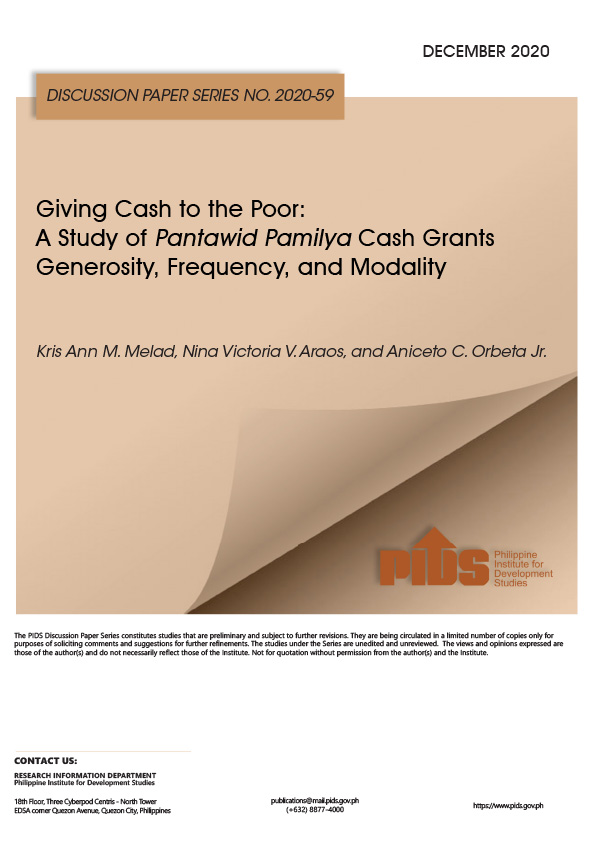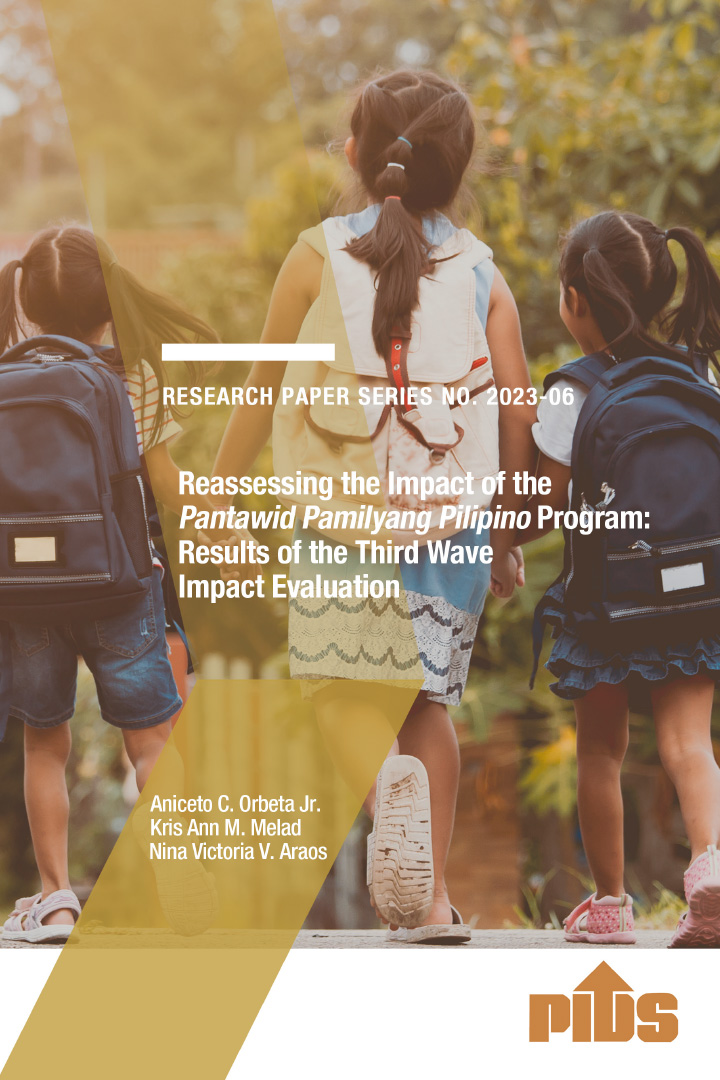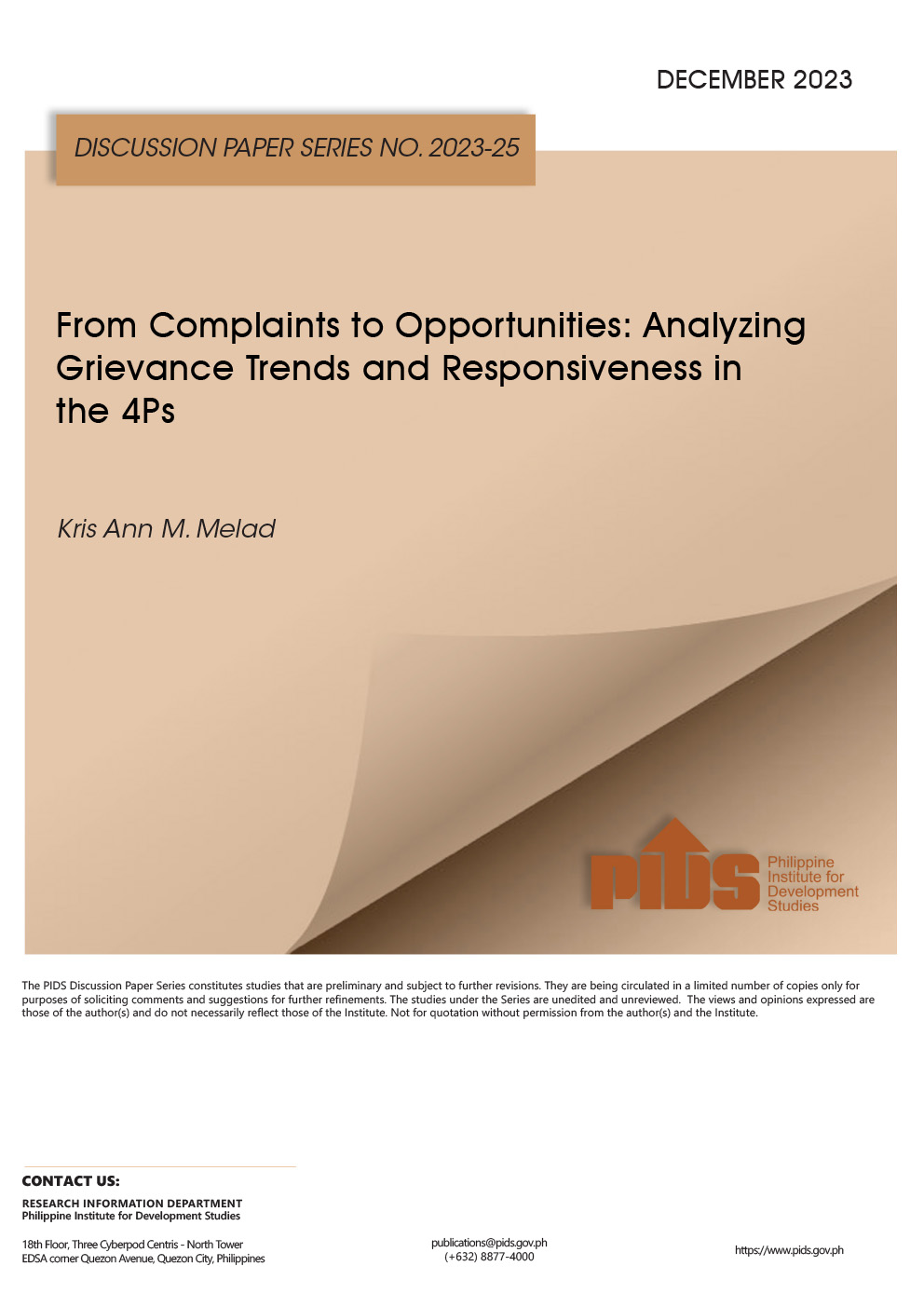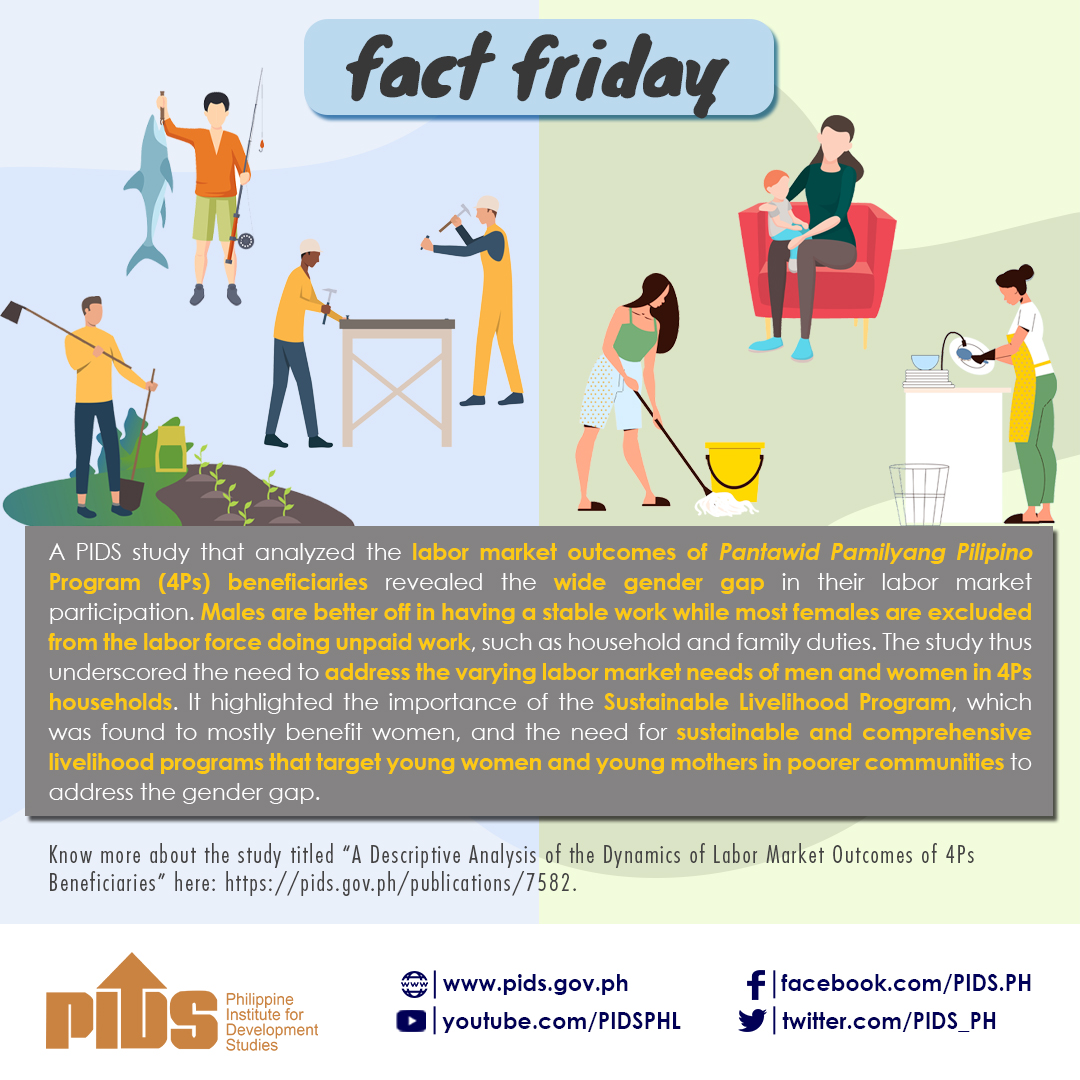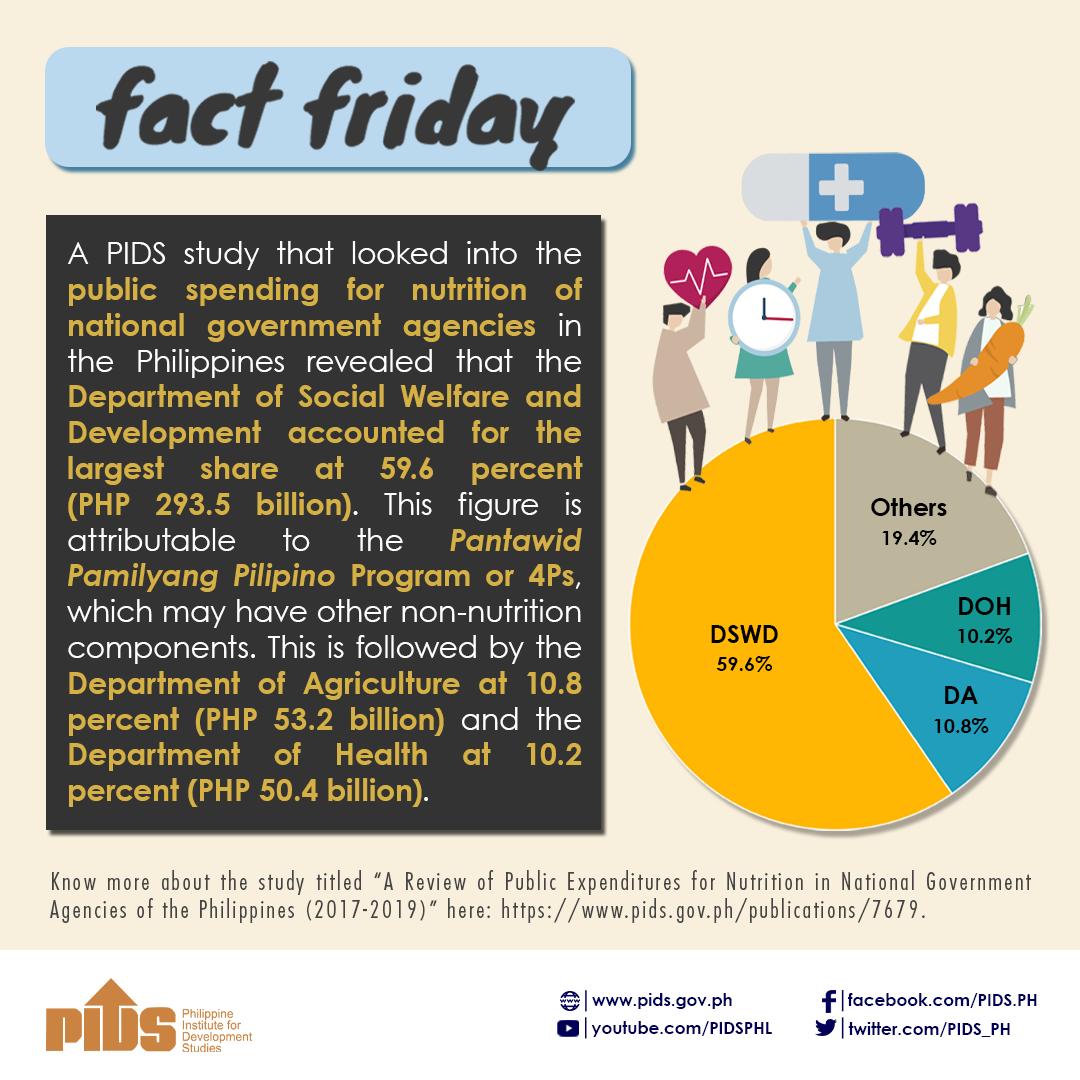This study assesses the payment system of the Pantawid Pamilyang Pilipino Program (4Ps or Pantawid Pamilya) in terms of the amount, frequency, and mode of payment delivery of the cash transfers. The study is an early attempt of the Institute to examine the Pantawid Pamilya implementation and recommend improvements in its payment system in light of the enactment of Republic Act 11310 which institutionalized the program and identified the Philippine Institute for Development Studies to conduct regular assessments on the program’s implementation and impact. The underlying framework for the study is based on the idea that the amount of cash grants and its delivery system should be able to encourage desired behaviors among beneficiaries and help achieve the program’s target outcomes. The study answers the research objectives using a combination of qualitative and quantitative methods of analysis that include a review of the available literature on payment systems of international conditional cash transfers; reassessment of the cash grant values in relation to original intended levels and devaluation due to inflation; assessment of the implementation of the payment system including challenges, facilitating factors, and alternative ideas; and an assessment of the impact of the payment system's design features on select outcome variables. The study uses the administrative data of the Department of Social Welfare and Development from the program’s 3rd impact evaluation, interviews of key program implementers in the payment system, focus group discussions with beneficiaries, and from an online survey focused on the payment delivery aspect of the Social Amelioration Program (SAP) among Pantawid Pamilya beneficiaries. The results show that the program needs to be more responsive in adjusting the benefit level of the cash grants vis-a-vis inflation and threats to welfare of the beneficiaries. With regard to payment frequency, there is no strong demand from the beneficiaries for more frequent payouts. Changes in frequency of payment should also be carefully examined to know if benefits outweigh additional costs in the operations. Although the payment delivery system has improved through the years, primarily due to the conversion of mode of payment to cash cards, some opportunities to improve the payment delivery of the program are still present. Finally, the experience with the SAP distribution demonstrated ease and speed, especially in times of emergencies when recipients (e.g., 4Ps beneficiaries) are identified and a payment system is in place. Comments to this paper are welcome within 60 days from date of posting. Email publications@mail.pids.gov.ph.
Citations
This publication has been cited 7 times
- Cai Ordinario . 2021. Cash aid scheme under CCT may need some revisions—PIDS study. Business Mirror.
- Charissa Luci-Atienza . 2021. DSWD: Adjustment in 4Ps cash grant not far-fetched. Manila Bulletin.
- Charlene A. Cayabyab . 2021. DSWD welcomes PIDS findings, recommendations on 4Ps. Sun Star Pampanga.
- CNN Philippines Staff . 2021. DSWD: Recommendation to increase cash grants for 4Ps beneficiaries 'timely' . CNN Philippines.
- DSWD. 2021. DSWD welcomes findings, recommendations of PIDS on 4Ps. DSWD.
- Mayvelin U. Caraballo. 2021. ‘Adjustment in 4P grants needed’. Manila Times.
- Remate online . 2021. Hirit na dagdag-cash grant sa 4Ps beneficiaries, napapanahon – DSWD. Remate On-line.

